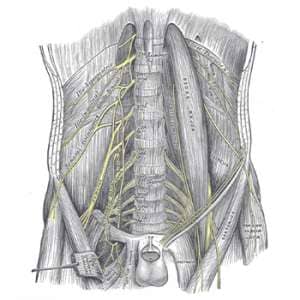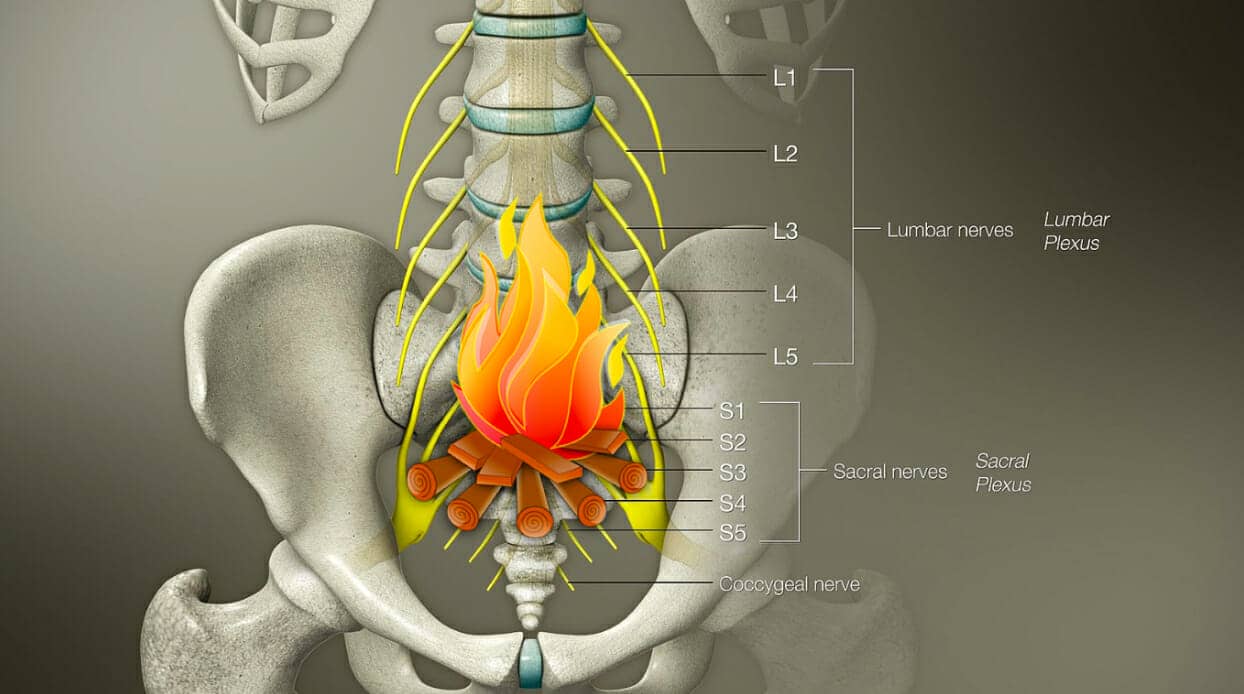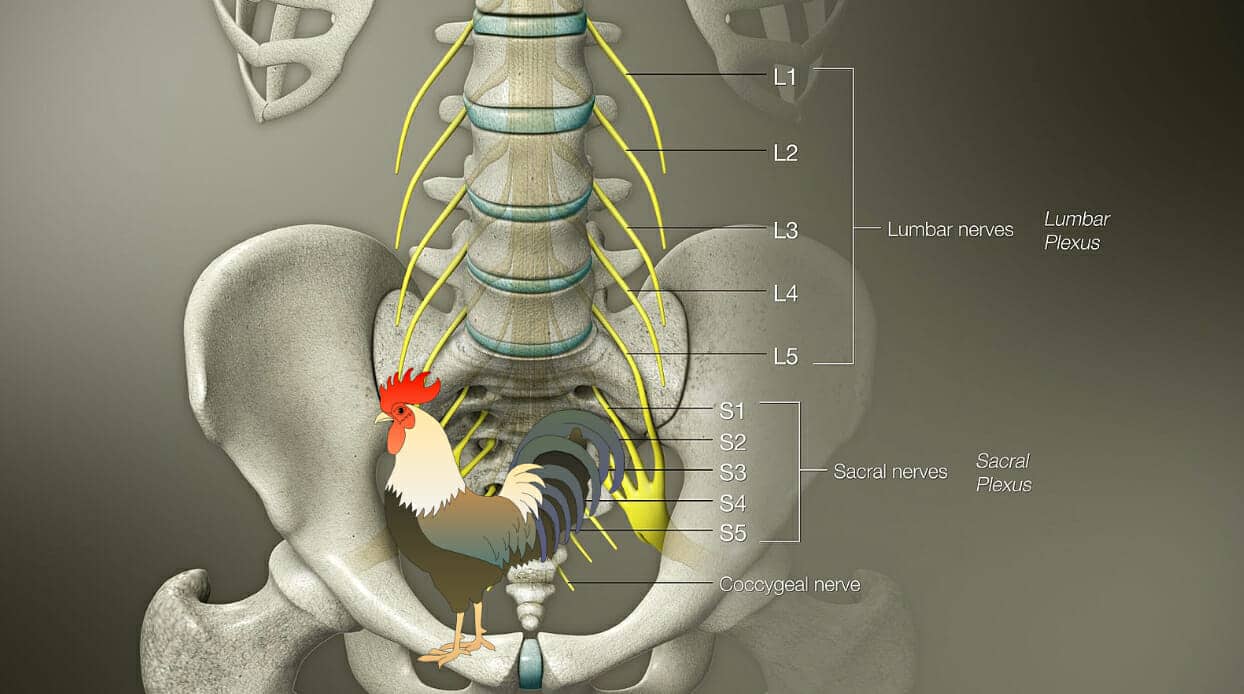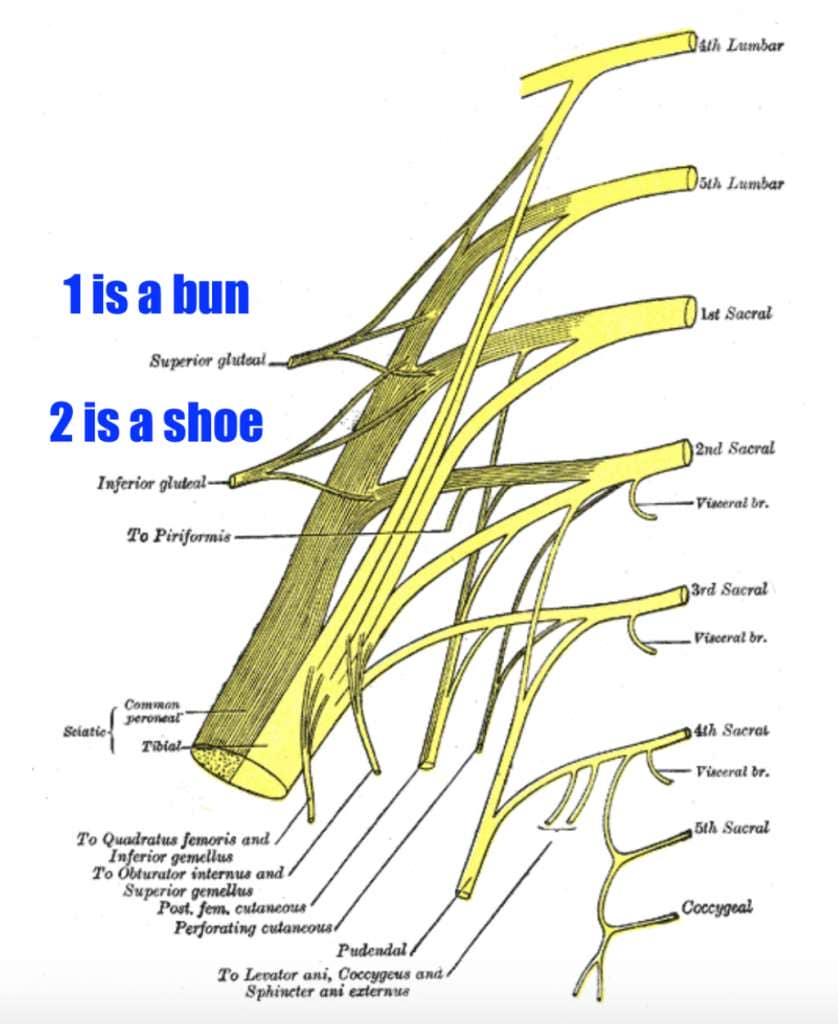 If you’re struggling to remember everything you need to know about the sacral plexus, let’s solve that issue right now.
If you’re struggling to remember everything you need to know about the sacral plexus, let’s solve that issue right now.
You see, most sacral plexus mnemonics…
They’re boring and ineffective.
But when you learn how to use medical mnemonics properly, two things will happen:
- You’ll breeze through complicated anatomy like the sacral plexus and lumbar plexus
- You’ll have much more fun while you’re mastering the information
All you need to know is how to craft the most powerful sacral plexus mnemonics on the planet by using a few simple principles and following today’s example mnemonics.
So if you’re ready to build your memory up from the foundations so you can master your knowledge of all things “sacrum”…
Let’s get started!
Sacral Plexus Mnemonics That Work Like a Charm
When it comes to tackling medical terminology, a knowledge of the root words is key.
Making sure you establish the fundamentals first will make every other part of the learning part easy.
Step One: Create a Multi Sensory Mnemonic for the Sacrum
In this case, we’re looking at:
- Sacral (relating to the sacrum and its general region)
- Sacrad (meaning toward the sacral region)
- Sacroplex (the ‘plexus’ or network of nerves stemming from the sacrum)
To start memorizing information like this, it’s helpful to use an etymological dictionary.
On Etymonline, we find that sacrum and sacral stem from “sacred” and sacrifice.
Why?
Because these particular bones were involved in sacrifices. If you take a second to imagine this part of your own body as a “sacrificial” memory space, it’s already much easier to remember this core term.
You can make this visual by imagining a sacrificial fire happening on your pelvis.
Next, you can elaborate this association by using proper mnemonic imagery that is multi-sensory.
It’s easy to do this by:
- Hearing the association
- Feeling the association
- Smelling & tasting the association
And that’s just for starters. I’ll give some more specific examples with more multi-sensory modes in a moment of proper elaborative encoding below.
For now, if you don’t already know other vocabulary like the coccygeal nerve, it’s important to learn how to memorize words rapidly.
In this case, you could imagine a rooster on this part of the body, i.e. a “cock.”
Step Two: Encode the Exact Sacral Nerve Location Scheme
When memorizing the sacral nerves and lumbar nerves, it’s useful to use a number rhyme system to help.
For example, if you’re memorizing the superior gluteal, you can imagine it wrapped up in a bun. You can think about how this particular bun is filled with “superior gluten” to trigger the correct terminology.
Likewise, when memorizing the inferior gluteal, you can think of this nerve bowing down to tie someone’s show – as if it were “inferior.”
Exactly how you use this mnemonic strategy is something you’ll need to approach as an experiment. But soon you’ll master the approach and have designed the best possible sciatic nerve branches mnemonic for yourself.
A Lumbar Plexus Mnemonic That Works Like a Charm
You’ve probably come across mnemonic examples for the lumbar plexus that made you scratch your head.
Seriously.
Memorizing “IIGLOFL” is abstract, vague and hard work. You might say that it’s just downright awful.
Let’s explore a different approach instead.
It’s called the Memory Palace Technique. You can still arrange the information using an acronym for the following information:
I: iliohypogastric nerve
I: ilioinguinal nerve
G: genitofemoral nerve
L: lateral femoral cutaneous nerve
O: obturator nerve
F: femoral nerve
L: lumbosacral trunk
But instead of relying on the acronym to help you remember the individual parts, you’ll use the Memory Palace to place associations. You can then readily revisit these associations to help you rapidly recall the individual parts in any order you wish.
Here’s an example of a home office:
Now imagine a room like the one pictured above. This time, it is populated with strange and interesting images:

To explain these associations, the first one is Ian Anderson from Jethro Tull jumping on a pogostick.
It’s not exactly the same sound as iliohypogastric nerve, but it’s close enough to start the memorization process rolling. And because this strange image of him playing the flute is happening beside the fireplace, it’s easy to think back to where this his happening and reconstruct the target information.
Then, for the ilioinguinal nerve, Ian Anderson can serve again, but this time with Gwen Stefani. “Gwen” is not exactly “guin,” but it’s close enough to trigger the basic sound.
Finally, we have a gentleman with a female near the desk in this Memory Palace. This is to help recall the genitofemoral nerve.
In each case, you will want to add a few more elaborations using the “Magnetic Modes” I teach in the Magnetic Memory Method Masterclass.
Good Lumbar Plexus Mnemonics Must Be Elaborated
To maximize the effectiveness of your associations and their staying power without having to waste hours of time looking at flashcards or Anki, here’s what to do.
When thinking about someone like Ian Anderson on a pogostick:
- Feel yourself in the association
- Hear what sounds are involved
- Get a visual sense for it
- Experience an emotion
- Add tastes and smells
- Touch on the concept involved (such as the genre of music because Ian Anderson is involved)
- Think of the size
- Reflect on the exact location of the Lumbar Plexus and associated nerves in the body
Then, come back and trigger the images and these sensations using the mnemonic devices you’ve placed in your Memory Palace. You’ll have developed your memory for these terms much faster than using another dry and boring medical acronym on its own.
Memorize Sacral and Lumbar Plexus Information Fast
There you have it.
A powerful process for creating incredibly powerful mnemonics for some of the trickiest info you’ll ever encounter.
Except now it’s not quite so tricky anymore.
You can use information you already know from pop culture to create powerful associations.
And you can elaborate them with the simple multi-sensory process I just shared.
So what do you say?
Whether you’re studying for the MCAT or plowing through nursing information, you are ready to succeed much faster.
And if you’d like more help with these memory techniques, register now for my FREE Memory Improvement Kit:
In all things, enjoy this journey into mastering your highly personalized sacral plexus mnemonics.
The world needs top-notch medical professionals and I commend you for seeking the best memory techniques the world has to offer.
So on that note, here are the best brachial plexus mnemonics as you continue your learning journey.
Enjoy!
Related Posts
- Mnemonic Devices: Top 10 Tools For Boosting Your Memory Fast
What are mnemonic devices, and how can you use them to remember? This post shows…
- Mnemonic Images: What They Are & How They Help
Mnemonic images are much more than just mental pictures. Learn to go beyond visual mnemonics…








